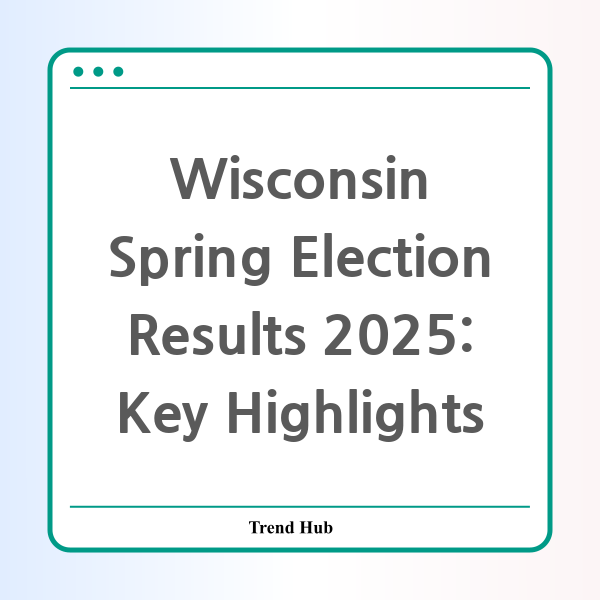* This website participates in the Amazon Affiliate Program and earns from qualifying purchases.

As Wisconsin gears up for its spring elections, the focus shifts to results that could potentially shift the political landscape as Illinois residents eagerly await the concluding tallies. The recent results from the 2025 Wisconsin Spring Election, which are now trickling in, reveal significant outcomes in key races and pivotal referendum questions.
One of the most notable races was for the Wisconsin Supreme Court. This election attracted widespread attention, especially given the candidates' contrasting platforms. Susan Crawford, endorsed by national Democrats, emerged victorious, securing 55.0% of the votes.
Voting Results:
| Candidate | Party | Votes | Percentage |
|---|---|---|---|
| Susan Crawford | Democrats | 1,286,748 | 55.0% |
| Brad Schimel | Republicans | 1,050,816 | 45.0% |
Another crucial race was the contest for Wisconsin's Superintendent of Public Instruction. Incumbent Jill Underly also emerged victorious, garnering 52.9% of the total votes, which reflects a significant support base.
| Candidate | Party | Votes | Percentage |
|---|---|---|---|
| Jill Underly | Democrats | 1,135,087 | 52.9% |
| Brittany Kinser | Republicans | 1,011,134 | 47.1% |
A particularly relevant referendum was the proposed Voter I.D. Requirement, which prompted vigorous debates statewide. The results indicated a decisive majority in favor of making Wisconsin's voter ID law permanent, with 62.7% of voters supporting this measure.
| Answer | Votes | Percentage |
|---|---|---|
| Yes | 1,418,637 | 62.7% |
| No | 842,534 | 37.3% |
These results stem from a robust voter turnout, which has caused some logistical challenges, including reported ballot shortages in Milwaukee due to the high volume of participants at polling places. Such turnout reflects an engaged voter base eager to influence state policy and direction.
The elections also featured local positions, including city council and school board races, which contribute to shaping community governance. The elections introduced candidates with varied platforms, creating a dynamic and competitive atmosphere.
As these results finalize, the implications of the outcomes will be closely watched both locally and nationally. The voting patterns observed may signal shifts in voter sentiment and priorities that could influence future election cycles.
In conclusion, the 2025 Spring Elections in Wisconsin have set the stage for significant political shifts, with the victory of candidates such as Crawford and Underly echoing broader trends in political engagement and policy preferences. The decisive approval of the voter ID law adds another layer to Wisconsin's electoral framework. The coming weeks will likely yield more discussions and analyses surrounding these results, shaping the future of Wisconsin politics.
* This website participates in the Amazon Affiliate Program and earns from qualifying purchases.